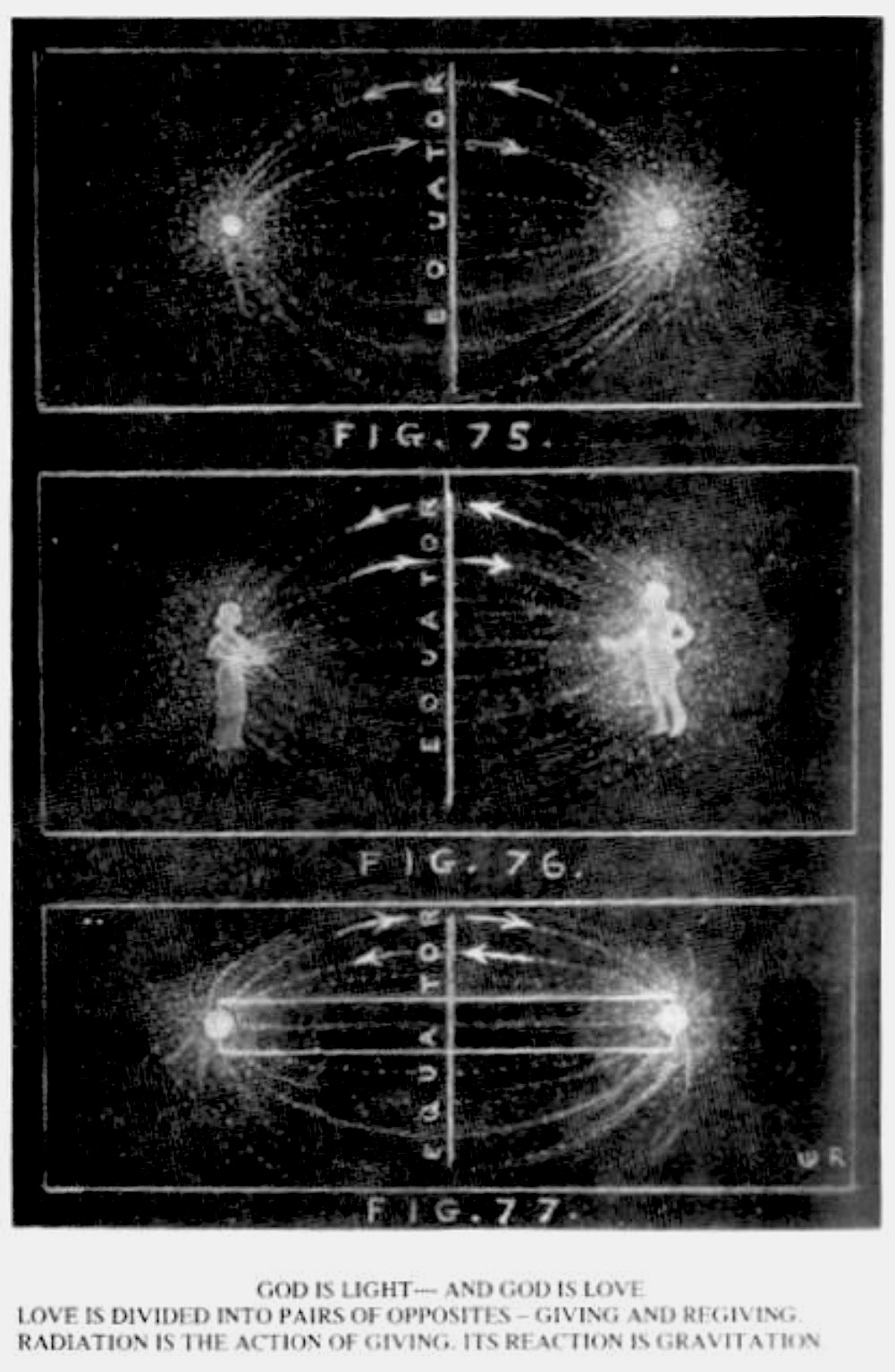37. This is a radial universe of ever-changing pressures. Every extending particle which leaves a cathode or anode is negative, for it expands as it leaves its primary and thus discharges. That very same negative particle - electron or otherwise - changes its polarization intensity every millionth-of-an-inch from either its cathode or anode. That is the reason science has so many names for the same particles.
When a particle arrives at wave amplitude - or any equator where the pressure condition is reversed - it can well be called a neutron, for its polarity is balanced at that reversal point.
After its curvature is reversed, it then becomes a positively-charging particle, for it contracts as it radially approaches its anode. It might then be called a positron or positive meson, or many other names as its condition changes. (See Figure 77, page 150.) [Walter Russell, A New Concept of the Universe, pages 78-79]
Return to New Concept - Table of Contents

